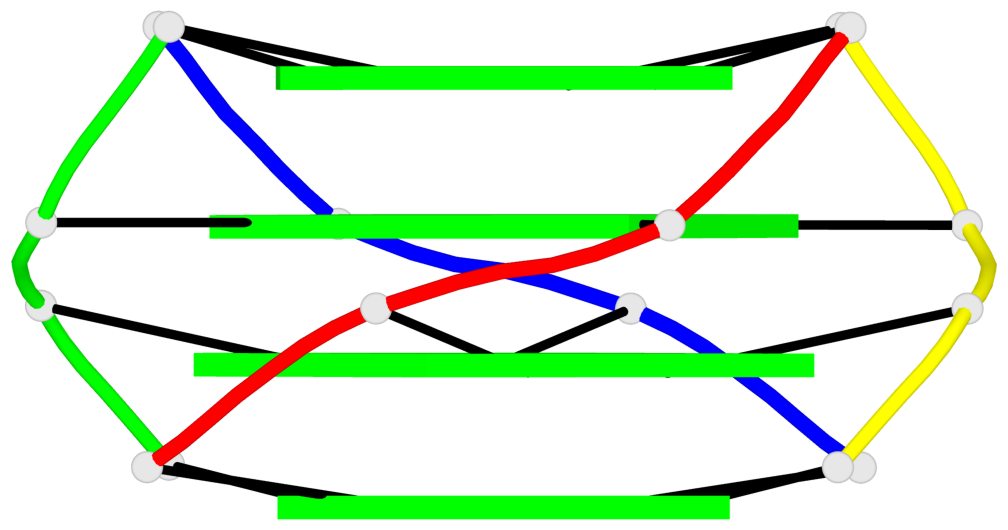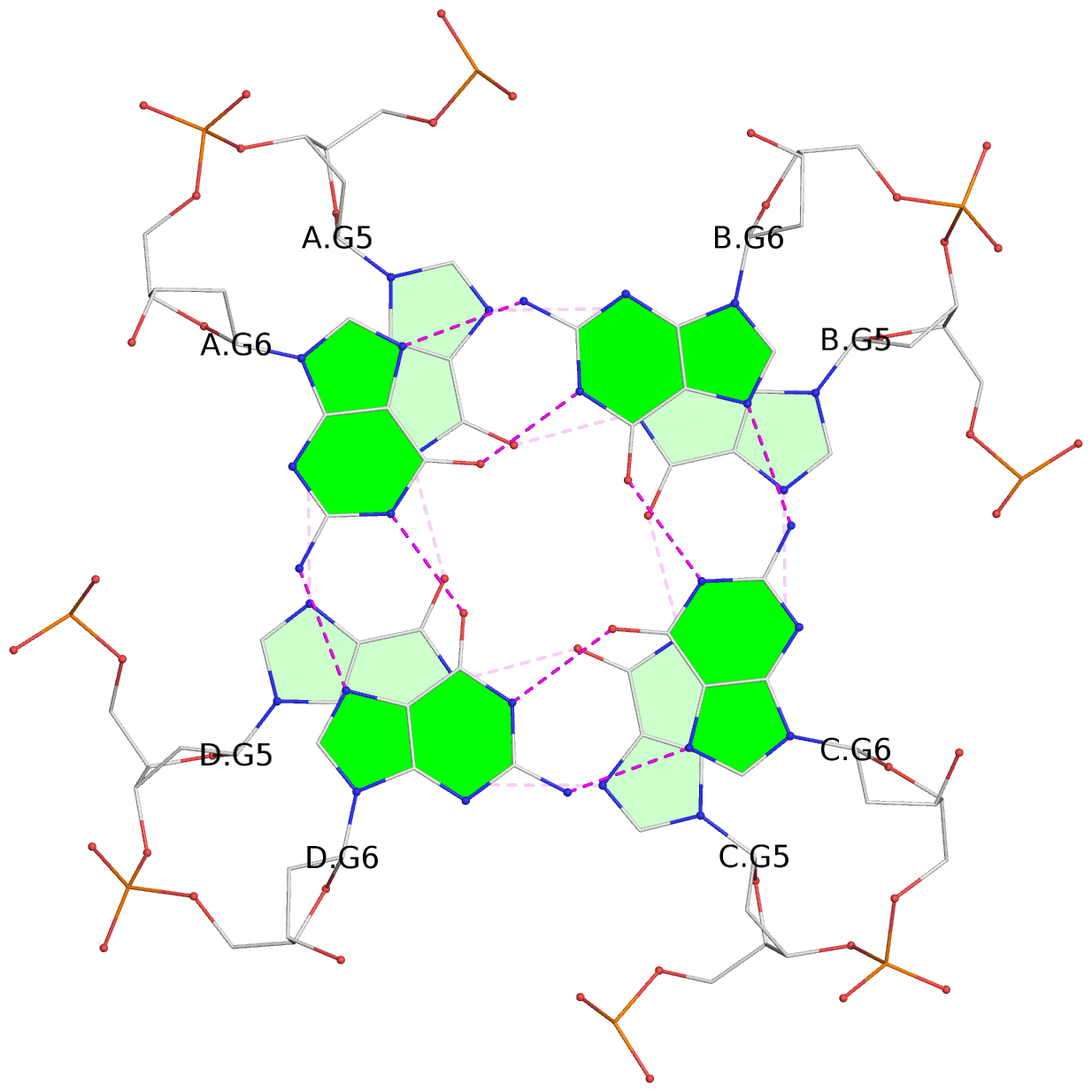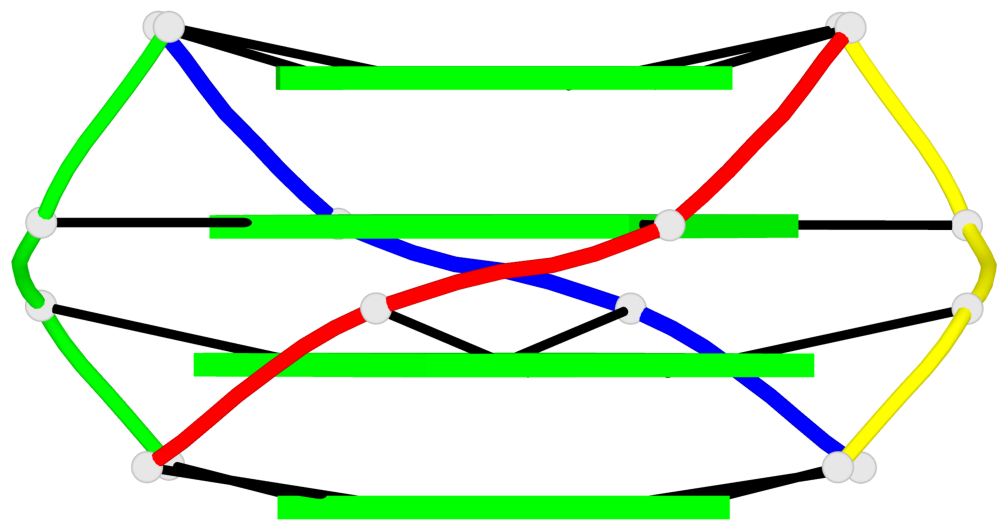Detailed DSSR results for the G-quadruplex: PDB entry 139d
Created and maintained by Xiang-Jun Lu <xiangjun@x3dna.org>
Citation: Please cite the NAR'20 DSSR-PyMOL schematics paper and/or the NAR'15 DSSR method paper.
Summary information
- PDB id
- 139d
- Class
- DNA
- Method
- NMR
- Summary
- Solution structure of a parallel-stranded g-quadruplex DNA
- Reference
- Wang Y, Patel DJ (1993): "Solution structure of a parallel-stranded G-quadruplex DNA." J.Mol.Biol., 234, 1171-1183. doi: 10.1006/jmbi.1993.1668.
- Abstract
- This paper reports on the solution structure of a parallel-stranded G-quadruplex formed by the Tetrahymena telomeric sequence d(T-T-G-G-G-G-T) whose NMR parameters in potassium cation containing solution were previously published from our laboratory. The structure was determined by combining a quantitative analysis of the NMR data with molecular dynamics calculations including relaxation matrix refinement. The combined NMR-computational approach yielded a set of seven distance-refined structures with pairwise RMSDs ranging from 0.66 to 1.30 A for the central G-G-G-G tetranucleotide segment. Four of the seven structures were refined further using complete relaxation-matrix calculations to yield solution structures with pairwise RMSDs ranging from 0.64 to 1.04 A for the same tetranucleotide segment. The R-factors also decreased on proceeding from the distance-refined to relaxation matrix-refined structures. The four strands of the G-quadruplex are aligned in parallel and are related by a 4-fold symmetry axis coincident with the helix axis. Individual guanines from each strand form planar G.G.G.G tetrad arrangements with each tetrad stabilized by eight hydrogen bonds involving the Watson-Crick and Hoogsteen edges of the guanine bases. All guanines adopt anti glycosidic torsion angles and S type sugar puckers in this right-handed parallel-stranded G-quadruplex structure. The four G.G.G.G tetrad planes stack on each other with minimal overlap of adjacent guanine base planes within individual strands. The thymine residues are under-defined in the solution structure of the d(T-T-G-G-G-G-T) G-quadruplex and sample amongst multiple conformations in solution.
- G4 notes
- 4 G-tetrads, 1 G4 helix, 1 G4 stem, parallel(4+0), UUUU
Base-block schematics in six views
List of 4 G-tetrads
1 glyco-bond=---- sugar=---- groove=---- planarity=0.098 type=planar nts=4 GGGG A.DG3,D.DG3,C.DG3,B.DG3 2 glyco-bond=---- sugar=---- groove=---- planarity=0.124 type=planar nts=4 GGGG A.DG4,D.DG4,C.DG4,B.DG4 3 glyco-bond=---- sugar=---- groove=---- planarity=0.061 type=planar nts=4 GGGG A.DG5,D.DG5,C.DG5,B.DG5 4 glyco-bond=---- sugar=---- groove=---- planarity=0.128 type=planar nts=4 GGGG A.DG6,D.DG6,C.DG6,B.DG6
List of 1 G4-helix
In DSSR, a G4-helix is defined by stacking interactions of G-tetrads, regardless of backbone connectivity, and may contain more than one G4-stem.
Helix#1, 4 G-tetrad layers, inter-molecular, with 1 stem
List of 1 G4-stem
In DSSR, a G4-stem is defined as a G4-helix with backbone connectivity. Bulges are also allowed along each of the four strands.










